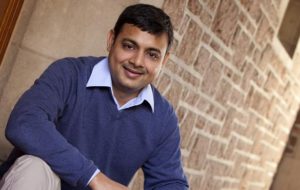An engineer at Washington University in St. Louis discovered a model in which the mechanics of the cells’ environment can predict their movement, a finding that ultimately could mean confining cell transition in tumors and potentially making cancer “a substantially less deadly disease,” said the lead researcher.
Amit Pathak, assistant professor of mechanical engineering in the School of Engineering & Applied Science, found that a cell-transitioning process implicated in tumor metastasis is influenced by the cells’ environment.
In new research published in Biophysical Journal, Pathak used computational modeling to show that epithelial cells are more likely to break off from their clusters in a confined environment, in either stiff or soft tissue. Pathak’s model is the first to show that various mechanical properties of the extracellular matrix can predict the state of cell clusters of defined shapes and sizes.

Epithelial cells, which are found in blood vessels and in the lining of various organs in the body, can change into mesenchymal cells, which are important in both embryonic development and cancer metastasis. In previous research, published in Scientific Reports, Pathak and Samila Nasrollahi, a doctoral student in mechanical engineering, showed that the stiffer the tissues, the more likely a process called epithelial-to-mesenchymal transition (EMT) will take place.
Surprisingly, the EMT goes up in when cell clusters are confined within 3-D environments, compared with standard 2-D cell-culture conditions. EMT comes into play in the development of embryos, when epithelial cells break out of clusters and transition into mesenchymal cells to aid organ development. However, it also is a crucial process in cancer metastasis, said Pathak.
“In cancer, if tumor cells do not decluster and escape, it is a favorable scenario because the tumor will stay in one place,” said Pathak, whose lab studies mechanobiology, or the intersection of mechanics and biology. “But when a cancer cell moves and leaves the tumor, it goes to another place and populates new tumors. If we can stop the EMT process right at the primary tumor, then cancer will be a substantially less deadly disease.”
Comments and respectful dialogue are encouraged, but content will be moderated. Please, no personal attacks, obscenity or profanity, selling of commercial products, or endorsements of political candidates or positions. We reserve the right to remove any inappropriate comments. We also cannot address individual medical concerns or provide medical advice in this forum.